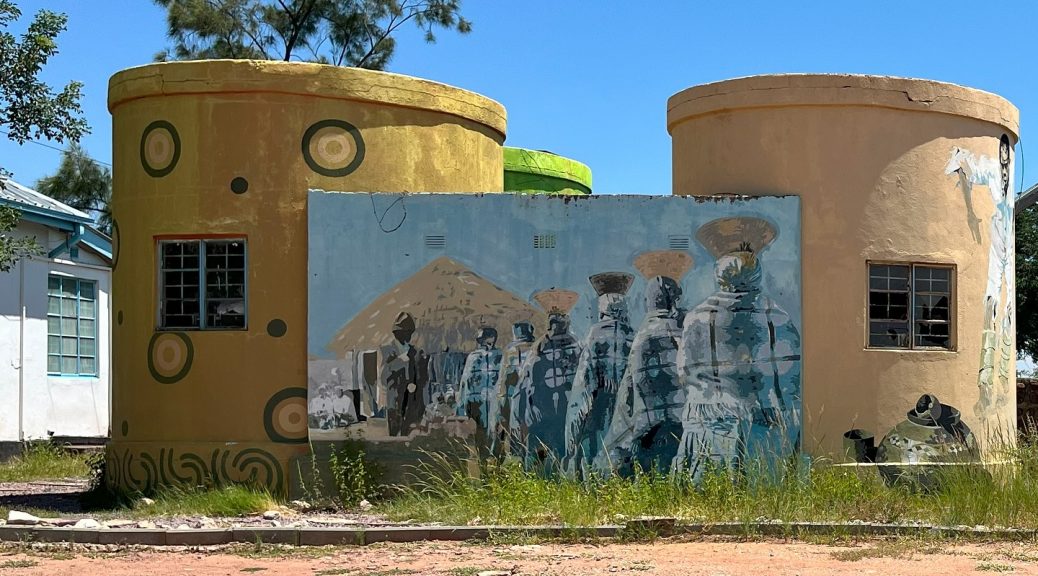
Etymologies and Meanings of Botswana’s Town Names – Molepolole
Molepolole, the sprawling administrative heart of Botswana’s Kweneng District, is officially the largest traditional village in Botswana and the home of the Bakwena tribe. Most etymological accounts state that the village takes its name directly from the Molepolole River. However, the history of the Bakwena – a history defined by movement, conflict, and a tireless quest for lasting stability – lends itself to a much more evocative, if speculative, linguistic interpretation: that the name signifies a place of ultimate release, freedom, or unburdening.

This interpretation, derived from the Setswana concept of go lepolola (to set free or unburden), makes perfect sense when you consider the Bakwena’s epic journey to finally find their permanent resting place.
To understand why this name fits so poetically, we must trace the Bakwena’s origins and their winding path to Molepolole. The Bakwena, meaning “people of the crocodile” (their totem), trace their roots to the Sotho-Tswana clans of southern Africa, emerging around the 15th century from ancestral figures like Kwena, who lived circa 1450. Historical accounts, including those from anthropologists like Isaac Schapera, describe how the Bakwena splintered from larger groups in present-day South Africa due to succession disputes and resource pressures.
In fact, the founding king of the Basotho nation, Khosi Moshoeshoe I, was too, from the Bakwena. Bakwena also birthed three other principal tribes (contributing to four of the eight recognised in the independence Constitution of Botswana). Bangwaketse, Bangwato, and Batawana.
By the 18th century, under leaders like Motlhabane and Kgabo, they migrated northward, fleeing inter-tribal conflicts and encroaching European settlers. These movements weren’t random; they sought fertile lands, water, and defensible hills – elements that would later draw them to Molepolole’s terrain.
The tribe’s early capitals reflect this nomadic resilience. One of the first documented settlements was Rathateng, near the confluence of the Crocodile and Marico Rivers in what is now South Africa, established in the late 1700s after splits from the Bakwena-ba-ga-Mogopa. From there, they pushed into Botswana, founding Dithejane as a temporary base.
 Under the pivotal leadership of Kgosi Sechele I, Bakwena were constantly moving in the mid-19th century, which was an era of intense regional conflict, fuelled by the rise of the Zulu kingdom, commonly referred to as Mfecane/Difaqane; as well as the increasing encroachment of Boer settlers from the south.
Under the pivotal leadership of Kgosi Sechele I, Bakwena were constantly moving in the mid-19th century, which was an era of intense regional conflict, fuelled by the rise of the Zulu kingdom, commonly referred to as Mfecane/Difaqane; as well as the increasing encroachment of Boer settlers from the south.
In 1852, Boer commandos from the Transvaal attacked nearby Dimawe (briefly settled in 1851 as an outpost), forcing a retreat to Dithubaruba in 1853. Dithubaruba, perched on rocky hills for defence, became a key capital until the mid-1860s. These sites weren’t just homes; they were bulwarks against raids, symbolising the Bakwena’s drive for security – or, in the spirit of their future capital’s name, to “set themselves free” from threats.
Sechele I first famously established his capital at Kolobeng in 1847, a site known primarily today as the location where he hosted the missionary and explorer David Livingstone. But stability was short-lived. Following the infamous Boer attack on the nearby Bakwena capital of Dimawe in 1852, an event that significantly demonstrated the external threats facing the Tswana chiefdoms, Sechele I chose to relocate once more, seeking a more secure and defensible position away from the main invasion routes.
attack on the nearby Bakwena capital of Dimawe in 1852, an event that significantly demonstrated the external threats facing the Tswana chiefdoms, Sechele I chose to relocate once more, seeking a more secure and defensible position away from the main invasion routes.
Bakwena ultimately found relative peace in the area now known as Molepolole, establishing their capital at Ntsweng, a site slightly to the southeast of the current village, around 1864. This first occupation of the Molepolole area marked a period of respite. For decades, Ntsweng was the political and social hub of the Bakwena, allowing the tribe to consolidate its power and begin healing from the earlier conflicts. It was, for all intents and purposes, the place where they hoped to finally be unburdened.
By the 1920s, the Bakwena tribe was once again fragmented. The traditional capital at Ntsweng had grown complex and, in the eyes of the colonial administrators and the visionary tribal leader, was no longer fit for modern administration or tribal unity. The chief tasked with this monumental undertaking was Kgosi Kgari Sechele II.
In a decisive move, Kgari Sechele II, with the encouragement of the British Protectorate authorities, worked tirelessly to knit the fragmented tribe back together. He initiated and largely completed the relocation of the capital from Ntsweng to the present-day Molepolole site, finalising the move around 1937. This strategic move was not a flight from war, but a move toward institutional strength; a political and administrative liberation.

Whether derived from a simple river name or from the profound Setswana verb go lepolola, the name Molepolole carries the weight of its history. When the Bakwena settled near the Molepolole River in 1864, it represented a decisive end to the brutal cycles of displacement caused by the Difaqane and Boer aggression. When Kgari Sechele II executed the final, large-scale resettlement in the 1930s, he effectively completed the work of consolidating the Bakwena into the formidable, single entity they are today. He released the tribe from the administrative and social shackles that bound them to the old, scattered structures.